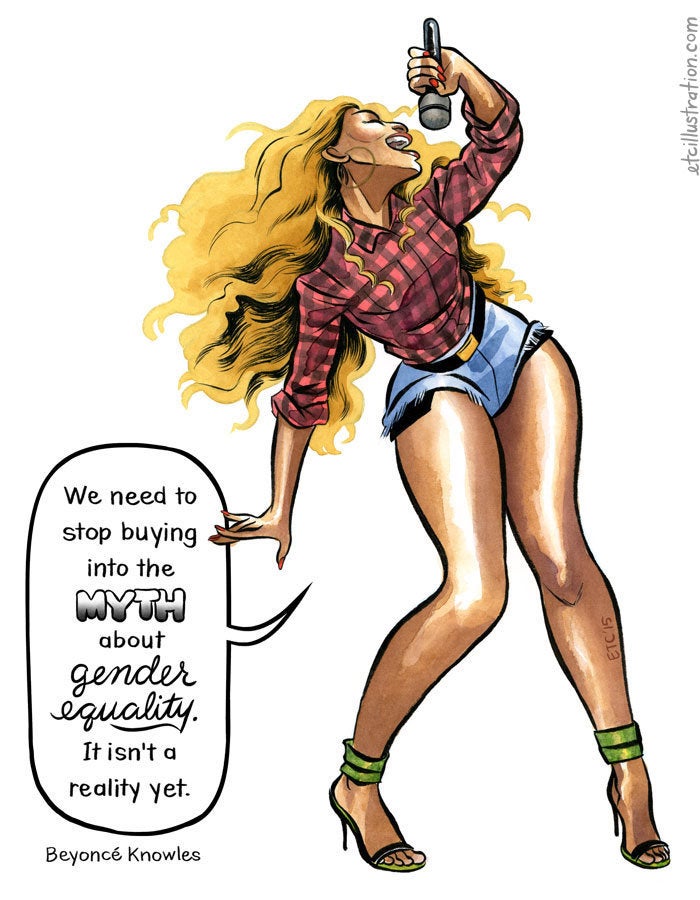
I had begun my career at one of the oldest of the old boys’ clubs, Newsweek, where the sexism had once been so rife that the female staffers—led by a young civil rights lawyer, now congresswoman, named Eleanor Holmes Norton—sued the company for gender discrimination in what was the first lawsuit of its kind. It was 1970, and the Newsweek women were brimming with privilege and smarts: Fulbright scholars, valedictorians, graduates of Seven Sisters colleges from well-off families. As Norton would describe it later: “These were women who you would think wouldn’t have anything to fear at work.”
And yet they were told bluntly that “women don’t write.” They were called “dollies” by their male bosses. Their job duties included pushing mail carts and delivering coffee as well as real research and reporting, all three requiring handing something over to a man. “It was a very hopeless time,” said Susan Brown Miller, a feminist scholar who—along with the late director and screenwriter Nora Ephron—was a Newsweek researcher (i.e., “mail girl”) for a brief period in the 1960s. Both decamped before the lawsuit, but the words of a researcher who remained always stuck in my mind: “After a while you really did start to lose your confidence,” she told me. “You started to think, ‘Writing is what the men do.’”
I never knew that story, in part because the legacy had not been passed down. And yet four decades later, during my era, the experience felt familiar: writing was what “the men” did. I was a writer, of course. I held the title to prove it—as did many of my female colleagues. But our work was still published with a fraction of the frequency of the male staffers at that time. We had not been promoted as quickly as the male colleagues we’d arrived with. And it was hard not to notice that the leaders of the struggling newsweekly were almost entirely white and male. Later, we would add up the bylines for that calendar year: men would write all but six of the magazine’s forty nine cover stories.
Still, Newsweek was a cushy job for a young journalist. It was my first real job out of college, and I felt lucky* to have landed it. But it was also the first time that I began to doubt my skill. I wasn’t very good at talking myself up, and I stumbled when asked to pitch my ideas to a room—typically to a roomful of men. I didn’t know how to react when a basketball hoop was erected in the newsroom, or when the new boss began spending all his time hanging out by my desk. I didn’t have a mentor I could talk to. In fact, there were few senior women to speak of.
“...Gail Collins once told me that while the sexism of her era was certainly crushing, it also had a kind of benefit: It was easy to identify.”
It wasn’t blatant sexism... exactly. There could never be a formal policy that banned women from writing; to the contrary, the door was open to women, and we were rolling through it in greater numbers than ever. But those long-ingrained attitudes don’t just evaporate in a generation.
The New York Times columnist Gail Collins once told me that while the sexism of her era was certainly crushing, it also had a kind of benefit: It was easy to identify. When a guy pinched your ass or told you that “women don’t write at Newsweek” it certainly wasn’t fair, but at least you knew it wasn’t fair. It was clear-cut discrimination—sexism with a legal definition and a thumbprint—not simply a “feeling.” (Was it real? Am I crazy? Was I the only one who saw it?)
Recognizing sexism is harder than it once was. Like the micro-aggressions that people of color endure daily—racism masked as subtle insults or dismissals—today’s sexism is insidious, casual, politically correct, even friendly. It is a kind of can’t-put-your-finger-on, not-particularly-overt, hard-to-quantify, harder-even-to-call-out behavior that maybe isn’t necessarily intentional, or conscious. Sometimes women exhibit it too. None of that makes it any less damaging.
On a day-to-day level, it’s watching a man instinctively turn to a woman to take notes in a meeting, or being mistaken for the admin when you’re actually the one in charge. It’s being talked over in a group setting, over and over again, or having your idea attributed to someone else (more often than not a dude). It’s following all the rules, leaning all the way in, and still having to worry about being perceived as “too aggressive” when you display the behavior required of a person in charge. It’s knowing that a colleague calling another woman “ambitious” is the opposite of a compliment. It’s having to be nice (because women are nice!) but not too nice (don’t wanna be a pushover); maternal (a natural caretaker!), but not actually a mother (lest you be viewed as “uncommitted” to the job). It’s having to be confident so that you can command respect but not too confident (because we don’t like cocky women). It’s having to work twice as hard to prove you’re once as good, or three, four, five times as hard if you happen to be female and of color.
Some call this form of sexism “Death by a Thousand Cuts.” Taken individually, the affronts don’t seem like that big a deal. But over time, and collectively, they are fatal.
If you take the longitudinal view, there are a lot of positives about the state of gender equality today. Women are graduating from college in higher numbers, earning more graduate degrees and PhDs, dominating social media, engaging in online activism, and—for perhaps the first time ever—seeing themselves reflected back in television and pop culture. (All hail Shonda Rhimes!) Women hold the vast majority of consumer spending power in this country and, by 2018, wives will outearn husbands.
It is the fact that women are still more likely than men to feel like imposters, or that when men rise up through the ranks, we like them more, but when women rise, we like them less (which is why women have to make sure to smile frequently, show gratitude and concern, emphasize communal goals, be appreciative... you get the drill).
And yet.
In their first year out of college, even after accounting for all the things that could affect one’s wages—job choice, job type, hours worked, taking time off, and so forth—women still (still!) earn just 93 percent what their male peers do. Women of all races and ethnicities will be one-quarter as likely to negotiate a raise—and will be deemed pushy or aggressive when they try to. Some of these are privileged problems, no doubt, but these same problems can be viewed as even more acute for the 42 million women in America on the brink of poverty.
“Like the micro-aggressions that people of color endure daily — racism masked as subtle insults or dismissals — today’s sexism is ... casual, politically correct, even friendly.”
The stats show clearly that there is a social benefit to changing the paradigm. Businesses are more successful when they hire women: more collaborative, more profitable, more inclusive.* Women are in fact more effective leaders, less likely to take unnecessary risks, great at multitasking, and have higher emotional intelligence—as the Harvard Business Review put it, “one of the least counter-intuitive findings in the social sciences.” True gender equality, research has shown, would increase the U.S. GDP by 26 percent.
In an ideal scenario, we’d have policies in place to ensure that our workplaces are equal—and hopefully we’ll get there. But even if some scholars believe that it’s the female leadership style that will fuel the revolution (and they do), even if we are working on a political level toward systemic change (wage equality and paid family leave, for instance), even if every pop star in the world proclaims herself a feminist (thank you, Bey!), most of us still have to roll out of bed each morning feeling relatively powerless and face the mundane, boring, subtle bullshit that confronts us on a daily basis. Diversity trainings don’t solve for being the default “coffee girl;” our legal system isn’t equipped to solve for the fact that strong women will be perceived as “pushy” or the fact that Americans still prefer male bosses. Just look at Ellen Pao.
And so.
We need weapons of our own, then—an arsenal of them. We must be armed with data to prove the problem exists and tactics to chip away at it from the outside and the inside. We need skills, hacks, tricks, tools, battle tactics to fight for ourselves while also advocating for change within the system.
But!
This is not a solo task.
We need other women by our side. So let’s start by linking arms.
***
Jessica Bennett is an award-winning journalist and critic who writes on women, sexuality and culture. She is a contributing writer and columnist at the New York Times, where she has covered feminism and Greek life, sexual consent, and authored the first profile of Monica Lewinsky in a decade. A former staff writer at Newsweek and columnist at Time.com, she is also a contributing editor at LeanIn.Org, the nonprofit founded by Sheryl Sandberg, where she cofounded and curates the Lean In Collection, a photo partnership with Getty Images to change the way women are depicted in stock photography. Her new book,Feminist Fight Club: An Office Survival Manual (For a Sexist Workplace), will hit book stores in September.

